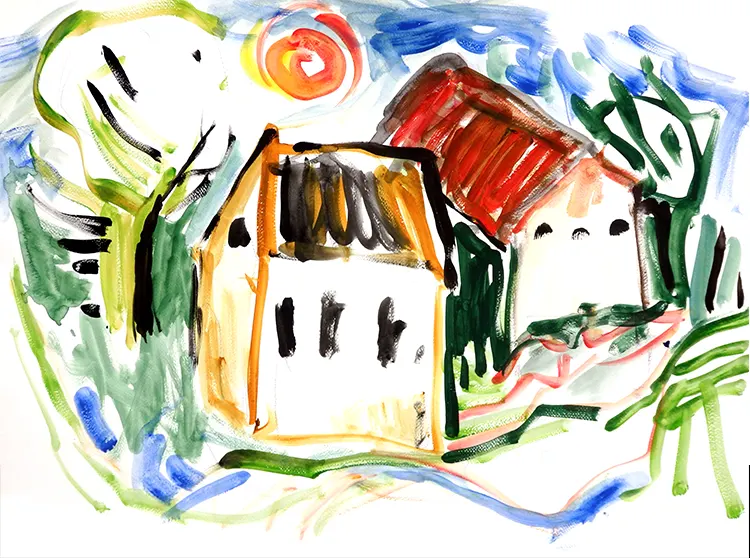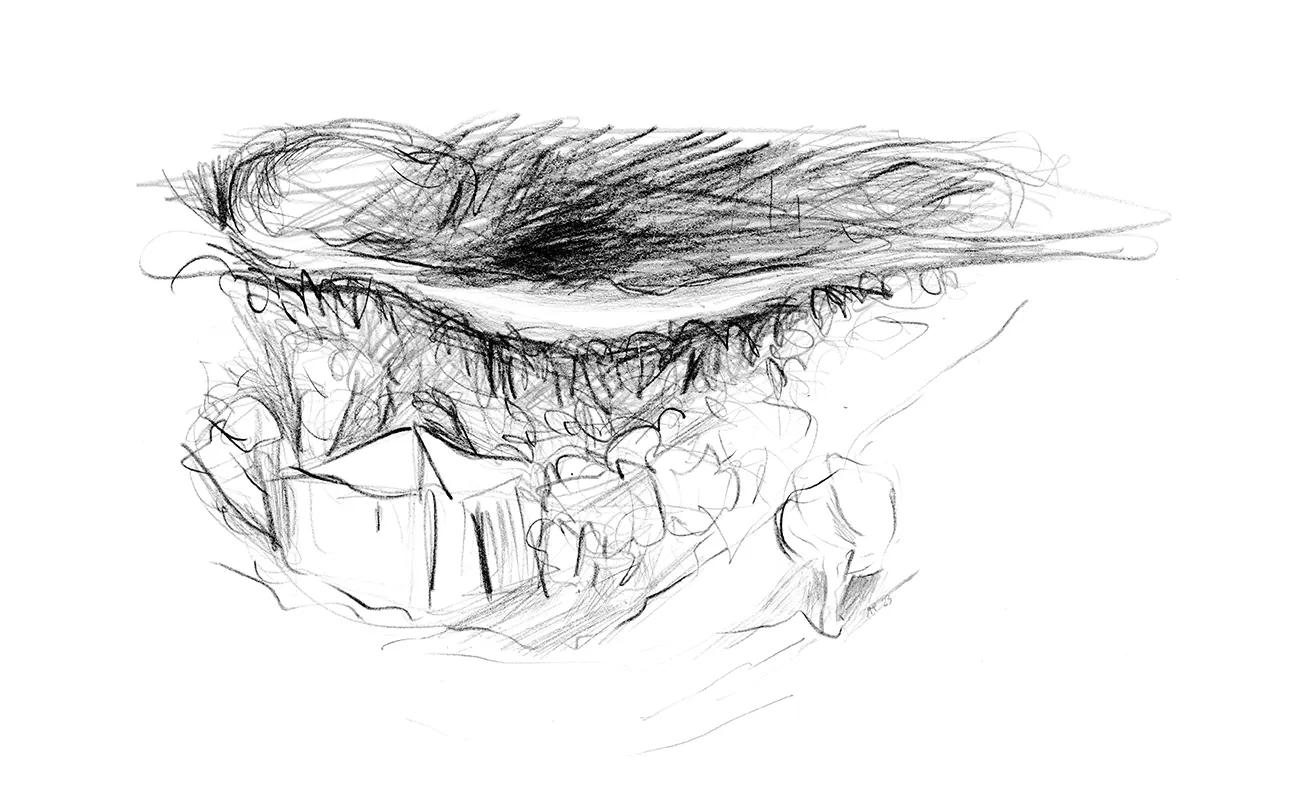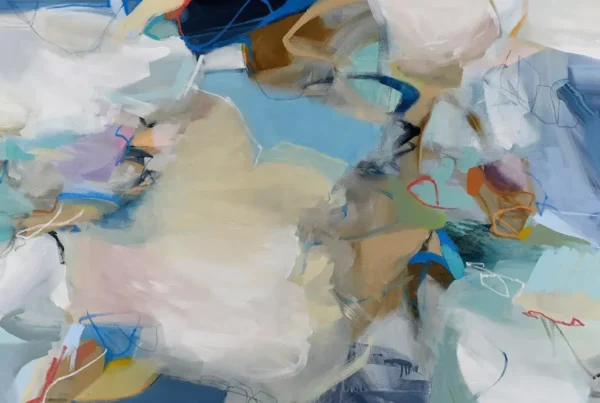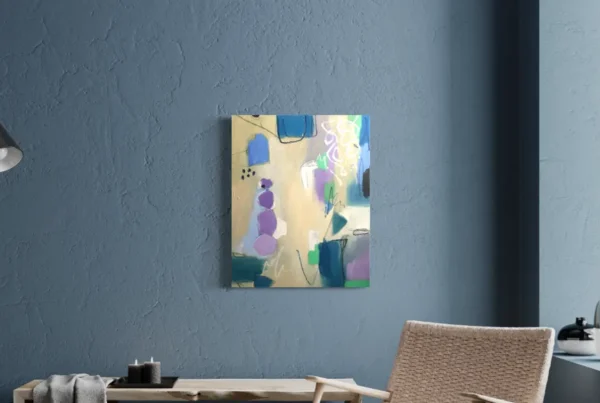“For me landscape is a synonym for nature and nature a synonym for indifference. For as long as I can remember nature made me feel exposed and lonely because of it’s capriciousness and fascinated because of it’s beauty.”
Nurturing the Artistic Vision: Renate Merzinger-Pleban’s Formative Years
Renate Merzinger-Pleban‘s artistic journey began in the culturally rich ambiance of Vienna, augmented by her childhood in the scenic village of Tullnerbach. This environment, deeply infused with artistic influences, was profoundly shaped by her father, himself an accomplished artist. His educational journey at the “Academy of Fine Arts” in Vienna, under the tutelage of distinguished Professors Ferdinand Andri and Anton Hanak, laid a solid foundation for his illustrious career. As a professor at the “Institute for Graphic Teaching and Research” in Vienna, his diverse body of work ranged from complex techniques in public buildings to independent projects. This exposure played an instrumental role in shaping the artist’s early interactions with the art world.
The artist’s academic path led her to the University of Vienna, where she briefly explored art history and theatre studies. This period, though short, was significantly enlightening, paving the way for her enrollment in the “Academy of Applied Arts” in Vienna. Under the mentorship of Prof. Hilda Schmid-Jesser in her master class, Merzinger-Pleban immersed herself in painting and graphic arts. This intensive four-year period culminated in her earning a diploma as an academic painter and graphic artist, a milestone marked by receiving an academy prize. Her educational journey, rich in diversity and depth, set the stage for her unique artistic expression and perspective.

Balancing Art and Life: The Creative Evolution of Renate Merzinger-Pleban
Renate Merzinger-Pleban’s foray into the art world coincided with the onset of her family life. Her marriage and the birth of her two daughters introduced a new dimension to her life, weaving a delicate tapestry of personal and professional commitments. The early years of motherhood, demanding much of her time, led to a natural shift in focus from her artistic endeavors. Despite these demands, the artist maintained her creative pursuits, with landscapes holding a special place in her oeuvre. Merzinger-Pleban’s artistic expression primarily employs acrylic and watercolor paints, complemented by graphic elements crafted with pencils of varying thicknesses.
The artist’s approach to landscapes is characterized by a degree of abstraction, allowing her to delve into the multifaceted essence of nature and its emotional impact. The process of painting and drawing for Merzinger-Pleban is akin to a rhythmic interplay of lines, strokes, and colors, each contributing to the articulation of form, space, and movement. Her art’s strength lies in the interplay of these elements and her judicious decision to leave portions of the canvas untouched. This approach underscores the potency of her work. Drawing inspiration from the external world, each of Merzinger-Pleban’s artworks serves as a reinterpretation of the natural environment, showcasing her unique perspective and artistic voice.

A Dialogue with Nature: Renate Merzinger-Pleban’s Artistic Process
Renate Merzinger-Pleban’s connection with the external world transcends mere observation, evolving into a deeply interactive relationship. She views her artistic journey as a continuous negotiation with nature, seeking her place within its vast tapestry and eliciting responses through her art. In transforming nature into landscapes, Merzinger-Pleban aims to render it more accessible, turning it into a sanctuary for thoughts and emotions. For the artist, landscapes are omnipresent, a consistent yet often unacknowledged backdrop to life. They serve as metaphors for nature’s indifference and unpredictability, while simultaneously evoking awe with their beauty.
In Merzinger-Pleban’s work, human figures are notably absent. She feels that the wide array of sensory and intellectual tools at her disposal diminishes the need to use art as a medium for exploring human themes. Her artistic expression, when faced with nature, becomes a focused interpretation of landscapes – a portrayal unchallenged, as nature offers no response. This silent defiance against nature’s indifference is reflected in her art, predominantly featuring dark lines against light backgrounds, occasionally interspersed with color. The environment in which Merzinger-Pleban creates is as integral as the art itself. She cherishes tranquility, necessitating a peaceful workspace to immerse herself in her art. This need led her to establish her studio above her apartment, a personal haven where she can engage with her work undisturbed.

The Evolving Artistic Journey of Renate Merzinger-Pleban
Renate Merzinger-Pleban perceives artistic influences as a complex amalgamation of experiences and exposures. She acknowledges the impact of various artists and art forms but emphasizes that engaging with art is a deeply personal and evolving process. In her view, art is a blend of effort and enjoyment, with the journey transforming over time. Merzinger-Pleban does not identify a single, definitive influence in her artistic development; instead, she sees her entire body of work as a reflection of her artistic evolution, with each piece contributing to her narrative in art.
Her approach to future projects is fluid, allowing her the freedom to explore and adapt as inspiration arises. This flexibility is mirrored in the evolution of her medium choices. Initially favoring watercolors for their translucency, her palette has broadened to include opaque acrylic paints, providing a different texture and depth. Similarly, her use of pencils has evolved, ranging from soft to very hard, each type adding a unique dimension to her work. This diversity in mediums is a testament to Merzinger-Pleban’s exploration of various methods to convey her artistic vision, illustrating her continual growth and adaptability as an artist.






